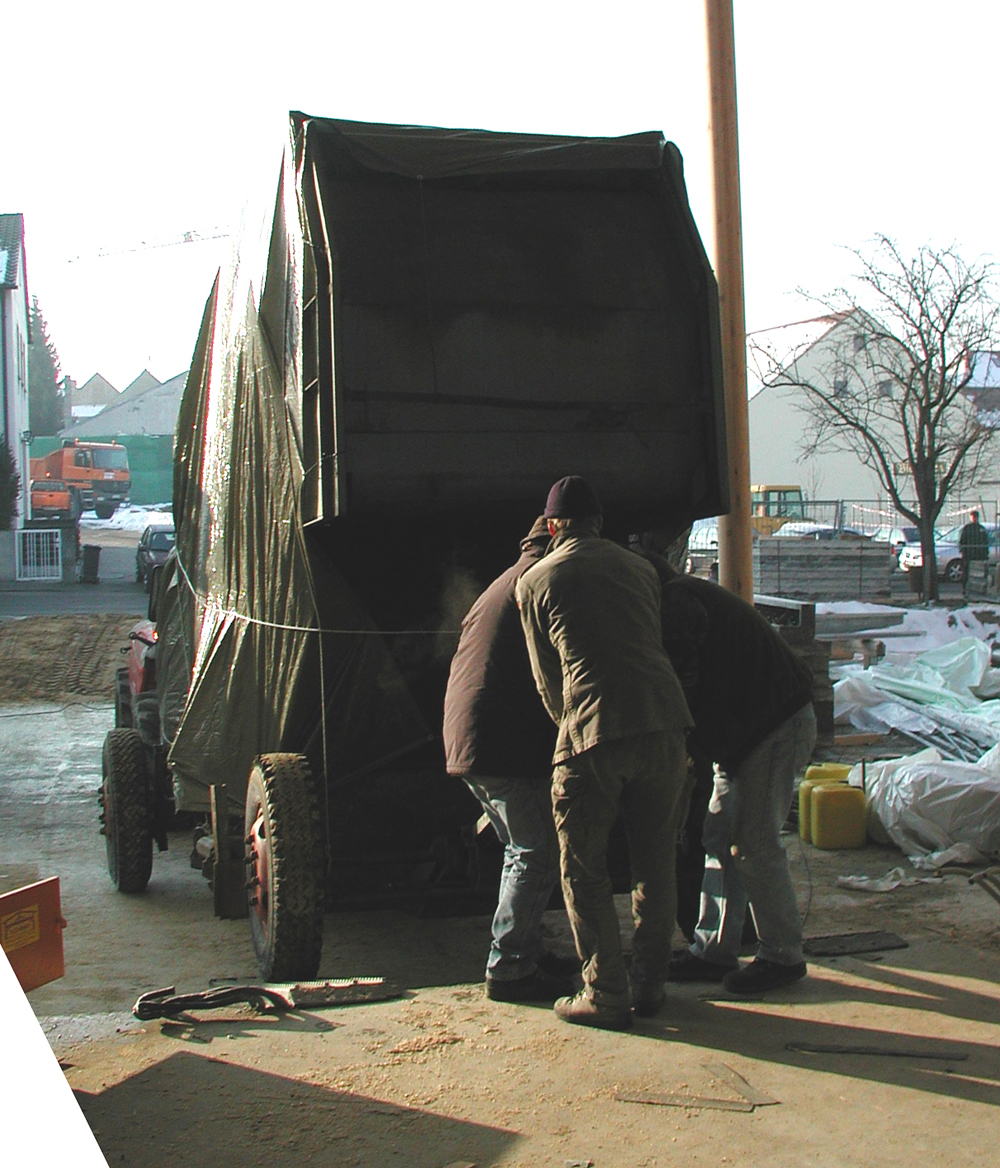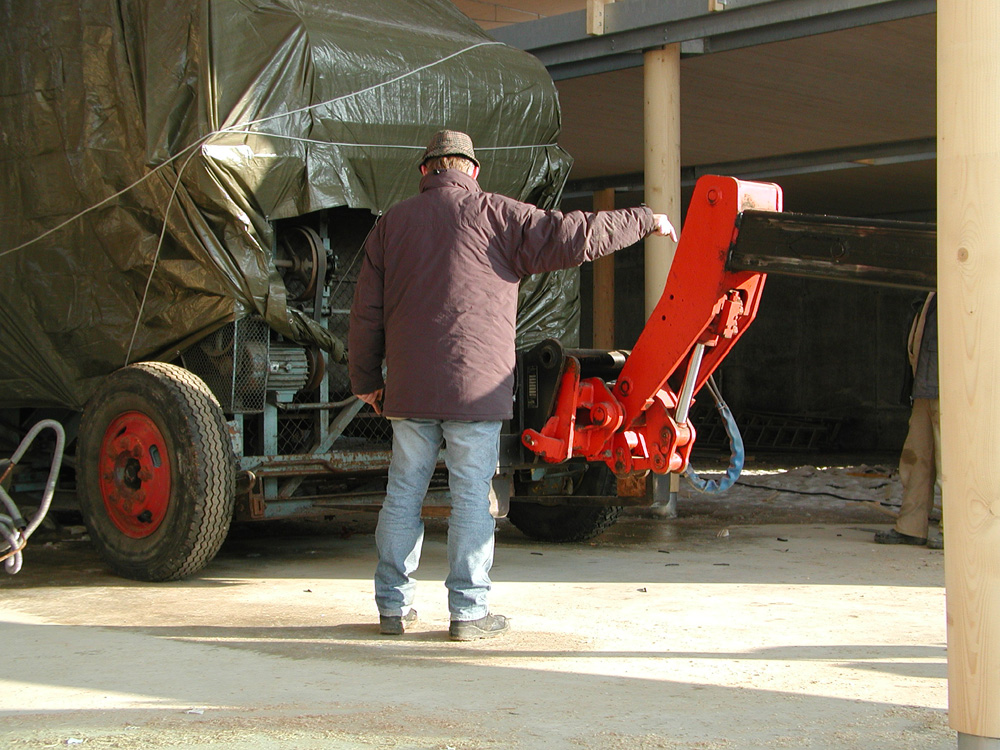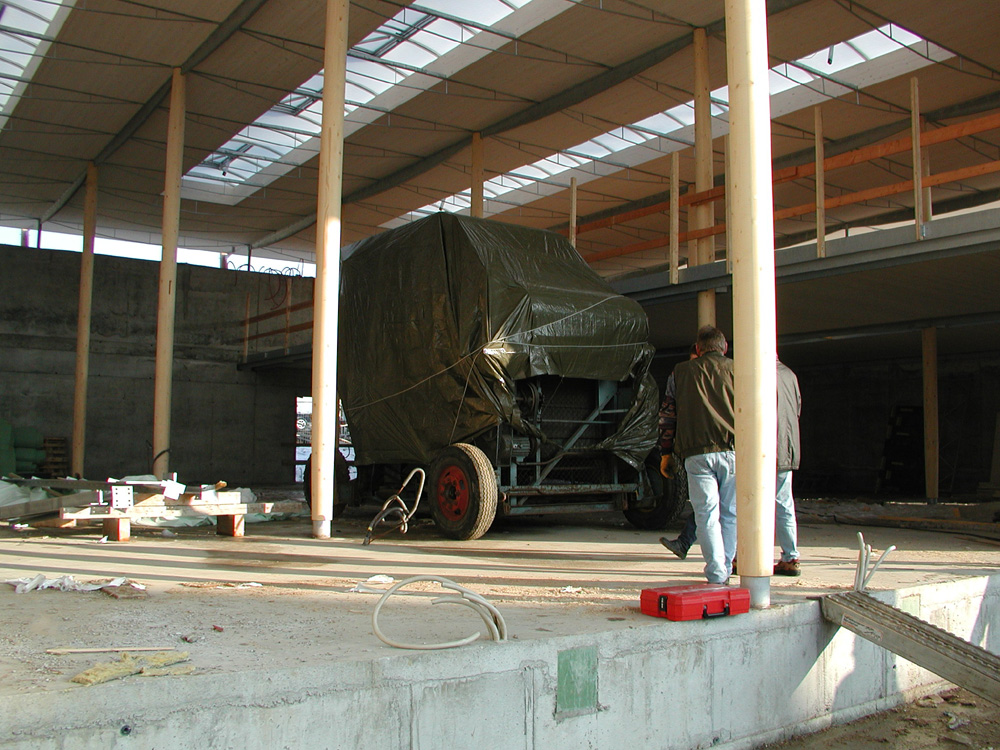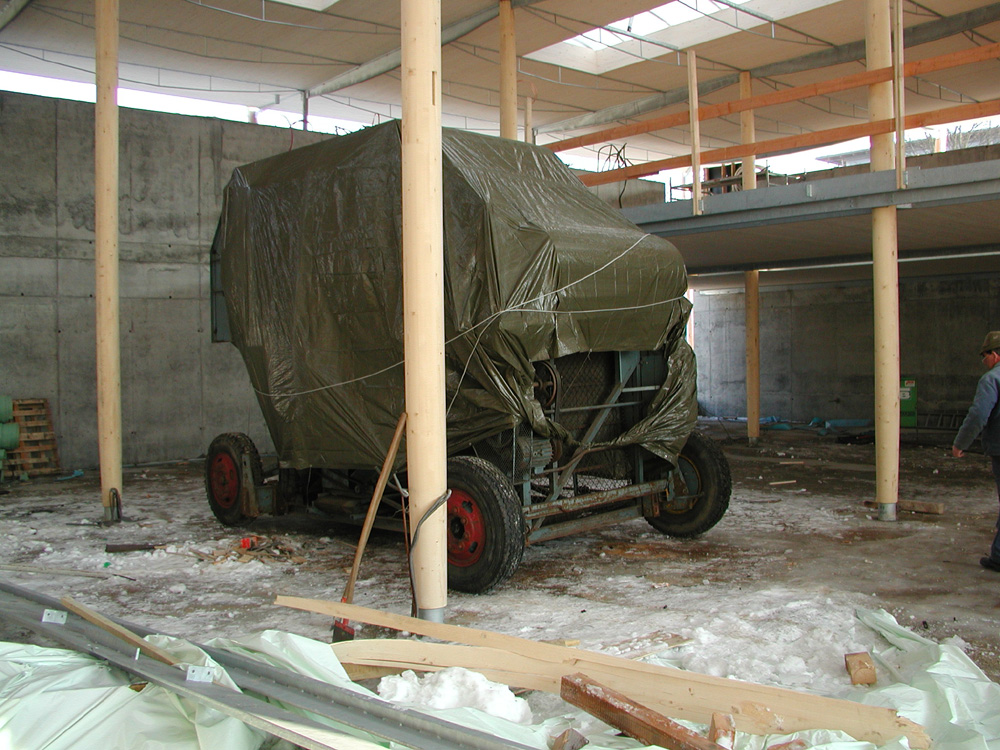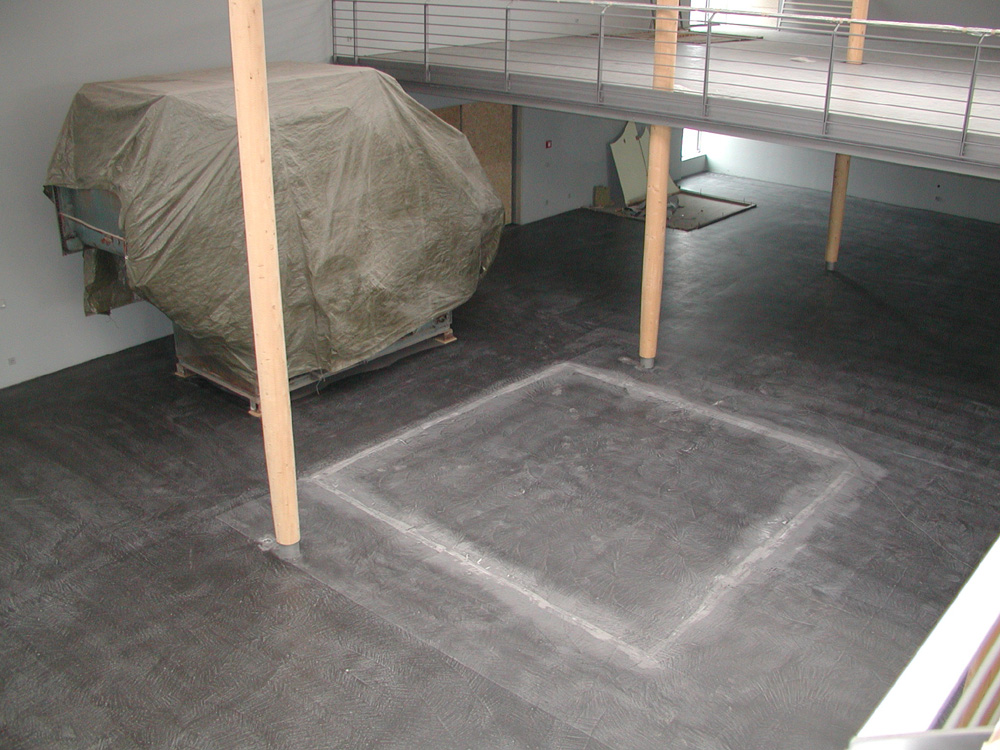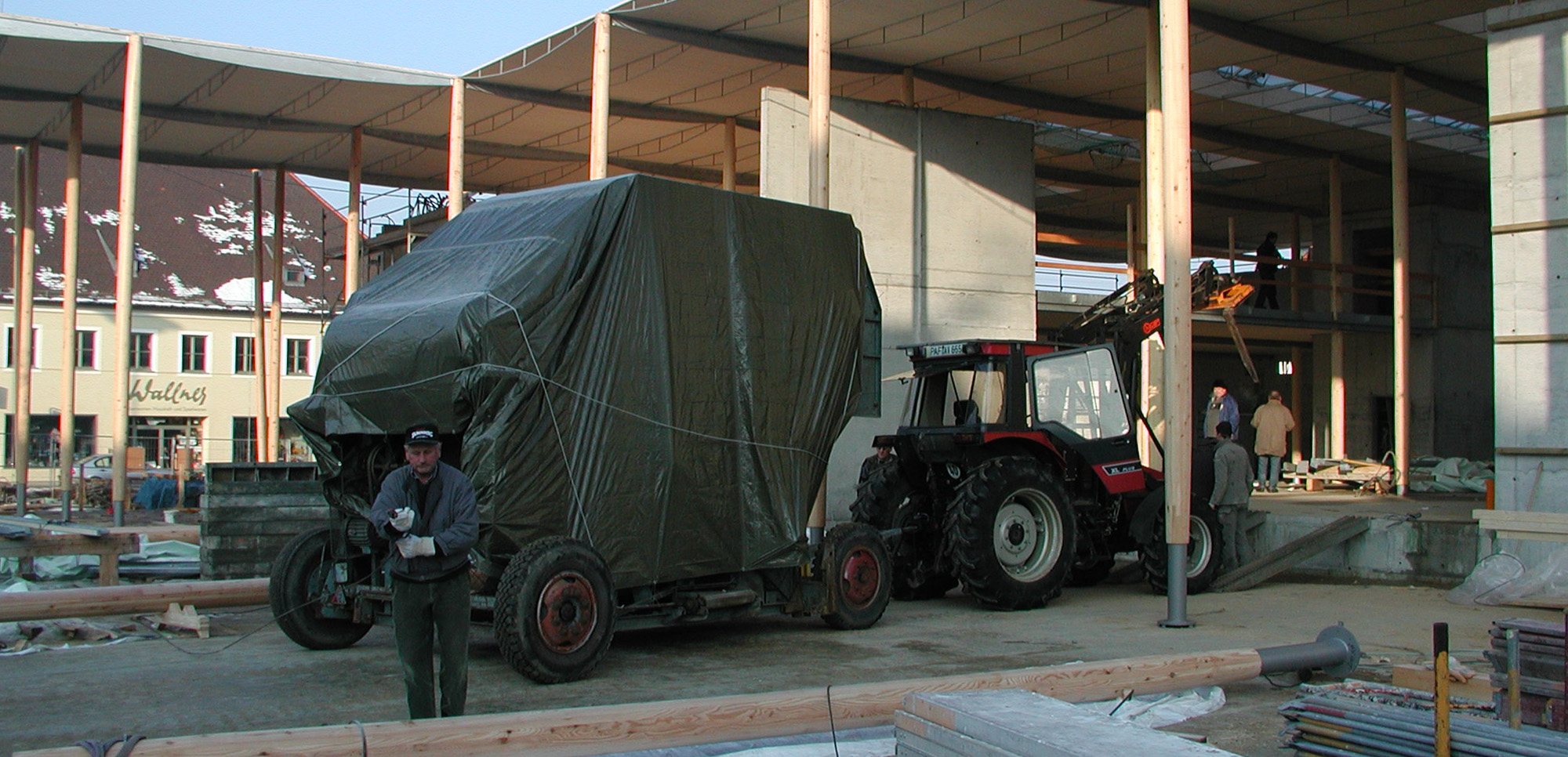
The hop picking machine
Museum items – for 20 years (1)
By Christoph Pinzl
Back in 1985, the museum association was able to add a very special item to its collection: a “Wolf Type I hop picking machine, 1962,” as it was described on the cover sheet. It came from the far edge of the Hallertau region, from Eggersdorf in the district of Landshut. Two “Kirm” (picking baskets) and a binding device for brushwood were also added to the museum’s collection.
The Type I was one of the very first picking machine models manufactured by the Wolf company in Geisenfeld. As was customary at the time, it still had the so-called “crossbars” with clamps into which the hop vines were hooked. Until then, there were either unaffordable giant machines that required their own halls to be built, or the compact machines from Flanders, which initially required a few fitters to be flown in from Belgium to get them up and running.
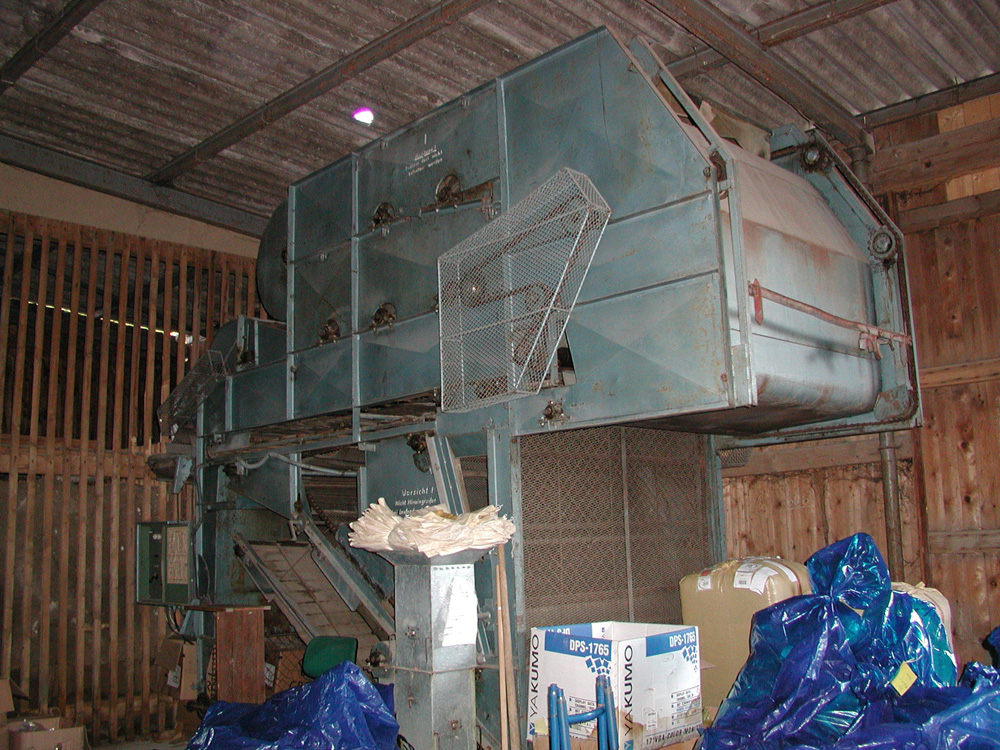
The initial storage of the machine was not ideal in terms of conservation.
When the Wolf Type 1 came onto the market in 1960, it was an instant hit with farmers. For the many small and medium-sized businesses that had previously hesitated to purchase a machine, the new compact machine “Made in Germany” seemed like the ideal solution. In no time at all, Wolf sold almost 500 units. The official purchase price was 16,500 German marks. Undoubtedly cheaper than the English and Belgian monster machines, but still the equivalent of a condominium in Munich.
Our machine came from a long-abandoned hop farm. No hops had been harvested there since 1985, and the only alternative to the German Hop Museum would have been the scrap metal dealer. Accordingly, the purchase price was agreed at just the scrap value. Landtechnik Karl Wallner from Wolnzach organized the collection. As is still common practice today, the machine was placed on two sturdy transport axles and driven home like a trailer by tractor. Given its length of around 5.00 m, a height of 3.60 m, and a width of 1.80 m, the 30 km journey from Eggersdorf to Wolnzach was not exactly relaxing. Assuming at the time that the museum would open soon, the picking machine was quickly stored in the barn of a club member in Niederlauterbach near Wolnzach.
As is well known, things turned out a little differently than planned. In the mid-1990s, the machine was moved closer to its final destination, to a semi-open shed on the site where the Protestant church in Wolnzach now stands. At least it was covered.
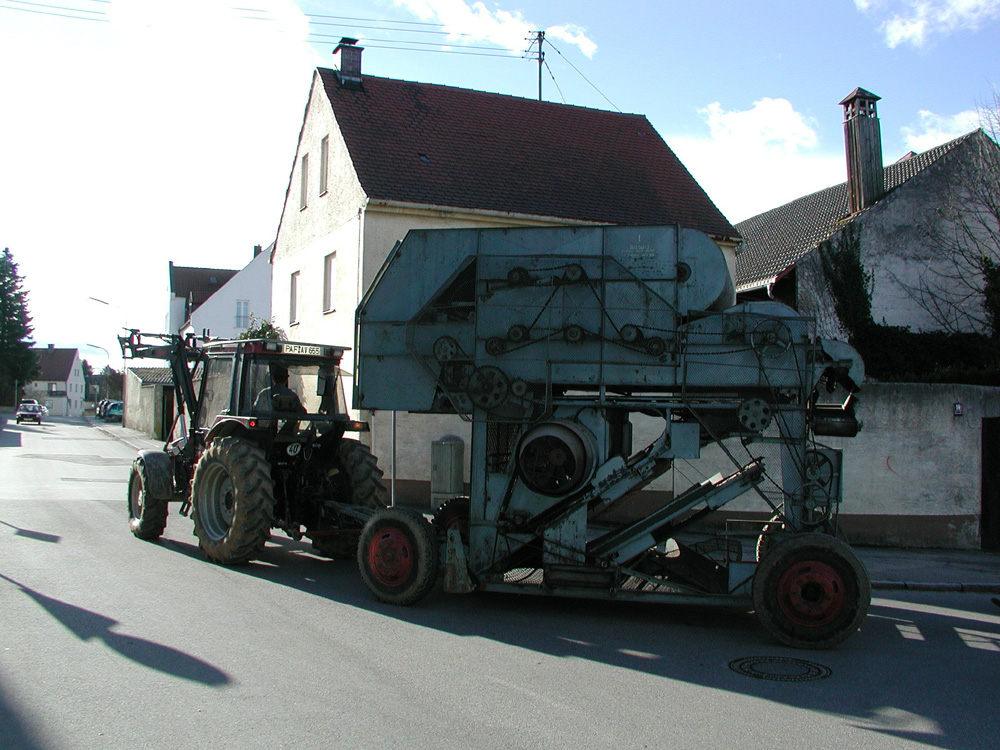
This is how the machine arrived in Wolnzach: on transport axles, pulled by a tractor.
When land finally came into sight and planning for the current museum began in the early 2000s, things got exciting again. An underground car park was to be built underneath the museum. This meant that the load-bearing capacity of the museum floor was limited. As a result, the parking space for the picking machine had to be equipped with particularly solid foundations. This meant that it had to be decided very early on where in the museum it would be located. At a time when the spatial concept for the permanent exhibition was only very roughly defined. The location of the machine was therefore a kind of shot in the dark. If you like, the future layout of today’s permanent exhibition had to be based first and foremost on the location of the machine. In the end, they succeeded. This was one of the many achievements of our museum design team.
But even after this hurdle had been overcome, things remained exciting. Fortunately, someone clever realized in time that the Wolf machine had to be handled differently from the rest of the exhibits. As usual, they were supposed to be brought into the museum after the construction workers had left. But then it would have been too late for the machine; no museum door would have been large enough and the permanently installed museum stairs would have blocked its path through the museum. So the picking machine moved into the museum while the shell was still under construction. It was brought in through the unglazed front of the museum, virtually through an open window. Then, protected by a sturdy truck tarpaulin, it had to remain in place for months between concrete mixers and construction cranes, hoping that no heavy objects would cause damage that would compromise its preservation. After all, the machine was to be put back into operation during normal opening hours. Operation in operation. Here, too, everything went well.
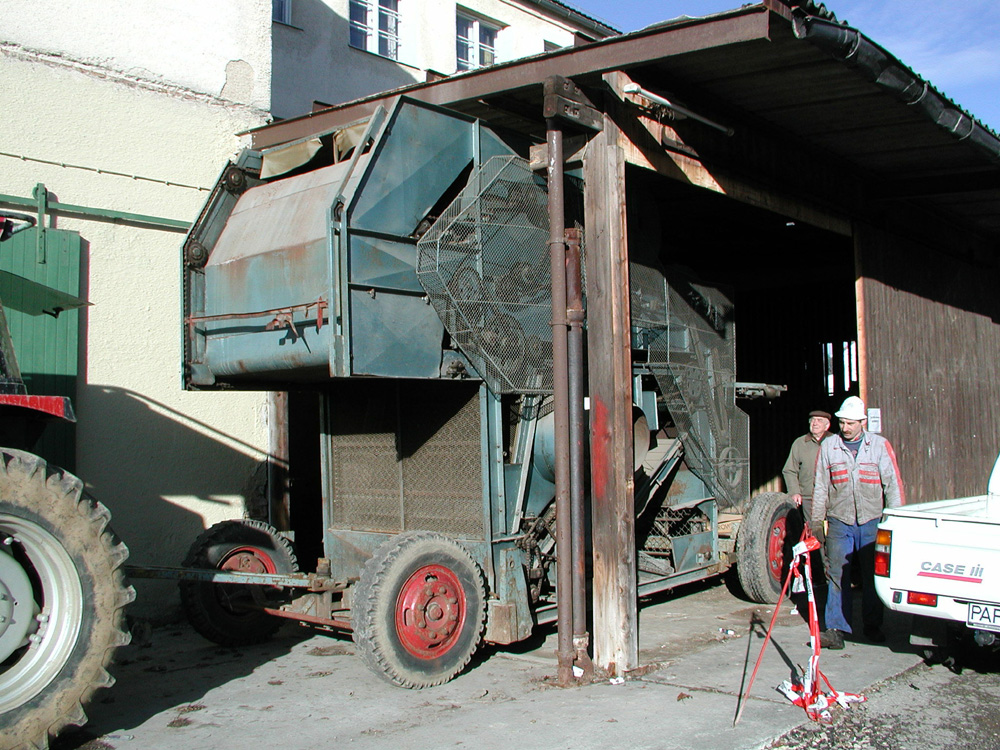
The machine is being moved to another depot.
The Wolf company itself ensured that the old machine was finally brought back into operation. They brought one of their most experienced picking machine specialists, Xaver Kastl, out of retirement and he skillfully ensured that the machine continues to run smoothly in the museum to this day. A documentary film should have been made about Kastl’s work, but unfortunately there was neither time nor money for this at the time. With every turn of the screwdriver, you could feel the enormous experience of this seasoned mechanic, which he had acquired during countless hours of maintenance and repair work with nervous hop farmers at harvest time.
Unfortunately, our plan to allow visitors to switch the machine on and off themselves did not work out. It only runs during a guided tour, idling of course, without hop vines. Because it makes an enormous noise out of the blue, this is probably for the best, so that our museum guests are not unnecessarily startled.
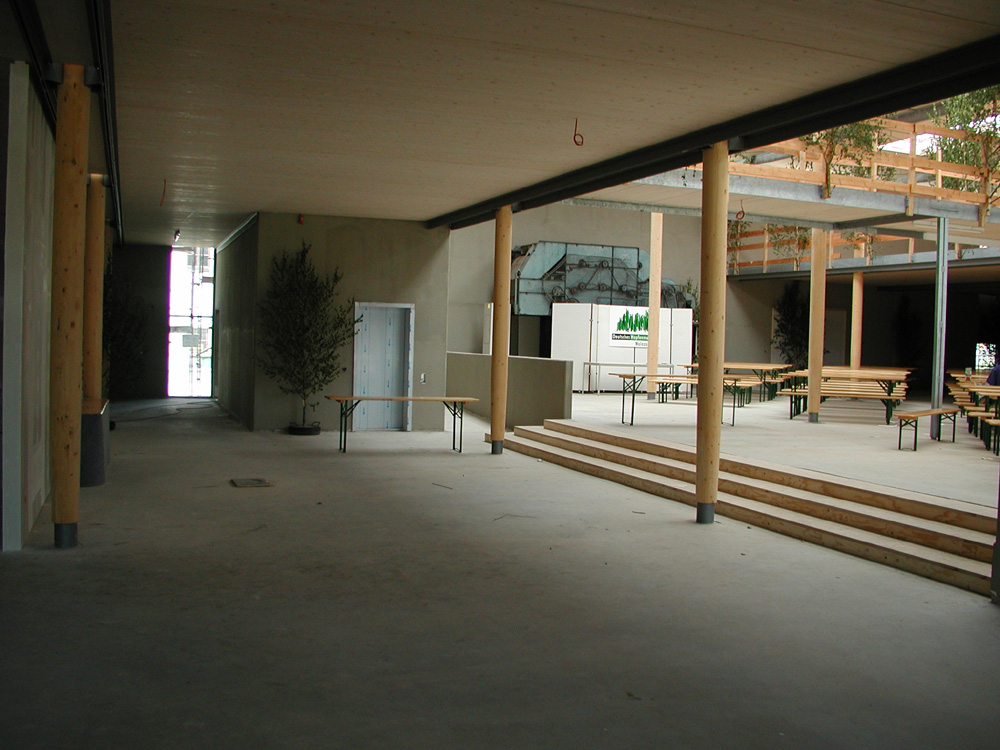
There it is at last, the machine. Everything is already prepared for the topping-out cere-mony. The ticket office area is still completely missing.
Despite the many open drums, chains, belts, and grids, the TÜV was kind enough to allow us to demonstrate the machine without glass covers or similar. To our knowledge, this is the only hop picking machine from market leader Wolf Geisenfeld that can be seen in a museum anywhere in the world. We are very proud of that.

